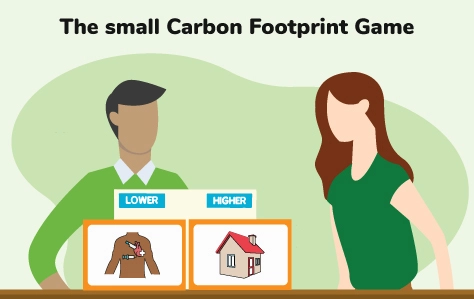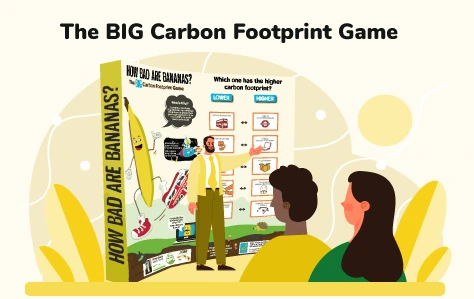It is a natural human instinct to want to know ‘which is better’. It helps make decisions, shapes our choices and influences purchases.
When people look at how they can reduce their carbon footprint and attention turns to their daily commute and modes of transport, the question of ‘which is better’ inevitably gets asked.
Everything we buy, use and consume has a carbon footprint. The carbon footprint of an item is what contributes to global warming and climate change. This is why when we are looking at ‘which is better’ we often look at what has the lowest carbon footprint.
But what does ‘better’ actually mean? Let’s unpick this further.
So we’ve decided we want to ditch the car for our inner city commute and find an alternative method of transport to help lower our carbon footprint. Let’s turn our attention to the bicycle and its electric counter parts- an electric bike (E-bike) and an electric scooter (E-scooter).

At face value the E-scooter has the smallest carbon footprint and therefore appears to be the best investment for embracing a low carbon lifestyle. However, these footprints are probably quite surprising and have actually created more questions than answers. Where have these numbers come from? Why is the E-scooter ‘better’ and why is a maximum total missing?
To understand these footprints, we will start with what all 3 of these vehicles have in common- their embodied carbon!
Embodied carbon is all the CO2e gases produced to create, maintain and then dispose of a product. In Mike’s book, How Bad Are Banana’s he accounts for the manufacturing process to create the bike and scooters but also includes the footprint of the outfit you might wear whilst cycling e.g. waterproofs. However, as we all prefer different types of clothing, which will all have different footprints, he defines this as a range from 0.01-0.1kg per mile.
The battery of the E-bike and E-scooter are also included as part of their embodied carbon. However, whilst lithium batteries have negative associations, in this case because we tend to use an E-bike and E-scooter longer than a regular bike and cycle further, the carbon footprint of the battery gets balanced out per mile giving all 3 the same embodied carbon.
In our Carbon Footprint game we have used the middle of Mike’s estimate, 0.05kg CO2e for all three vehicles.
But what about their differences? To understand these numbers, we need to think about where energy comes from. An E-scooter is a fully motorised two-wheel vehicle and therefore is powered using electricity (see: Legalising rental e-scooter trials – GOV.UK (www.gov.uk). The carbon footprint from the electricity is minimal at 0.003kg CO2e (Mike gets his numbers from an estimate of the UK National grid).

However, to power a push bike we rely on our own effort and leg power; this energy comes from the food we eat and the calories we burn! Therefore, to create an accurate carbon footprint we need to account for the energy that we get from burning calories when using our bike.
Bananas are known for their ‘fuelling’ purposes. If you ate a banana for breakfast, it would give you the energy to cycle a mile and your carbon footprint would increase by only 0.04kg CO2e. This is because a banana has as a surprisingly low carbon footprint. Bacon, in comparison uses almost 5 times the amount of CO2 at 0.19kg per mile.

Whilst for a single journey this may not seem a lot, when you consider all the miles cycled in a year and then a lifetime, the food you fuel your body with starts to make a big impact!
This is the same concept when trying to calculate the carbon footprint of an E-bike. An E-bike is a vehicle that assists the rider in their pedal power [1], this means some of the energy comes from the food calories we burn and some of the energy comes from the E-bike helping us out. Mike uses the 50/50 method to calculate this. He divides by 2 the total CO2e of the food calories you eat before you get on the E-bike and divides by 2 the electricity you would need to power the E-bike per mile.
[1] What is an electric bike and how do they work? Buyer’s guide to ebikes – BikeRadar

This means the difference in the carbon footprint comes down to the added addition of the energy we get from the food we consume. The larger the carbon footprint of the food we consume the more the carbon footprint for the E-bike and bike increases. The lower carbon footprint from the E-scooter is because electric motors are more efficient than legs at turning chemical energy into propulsion.
Food is so important to ensuring we are leading healthy and happy but these figures show the impact of food on so much more than just human fuel and energy, maybe it’s time to make positive changes to keep the planet healthy and happy to!
So, now we understand the reason behind the footprint range, we can use this as an opportunity.
Embarking on a lower carbon lifestyle should be an opportunity to consider how and where you want to make a difference. You might have other considerations such as you want to get healthier- therefore an E-bike and a more plant based lifestyle would be more beneficial. You might be looking to save time on your daily commute, buying an E-scooter would be the better option as it’s more carbon friendly than renting and you are getting lots of use out of it!
The question is no longer ‘which is better’, but which one will make you better and help you the most in your own journey to lowering your overall carbon footprint and living a lower carbon lifestyle.
This blog post has been written using the How Bad Are Bananas’ Carbon Footprint Game cards:
- 1 mile cycling (e-bike powered by bananas)
- 1 mile cycling (pedal powered by bananas)
- 1 mile cycling (pedal powered by bacon)
- 1 mile by electric scooter








